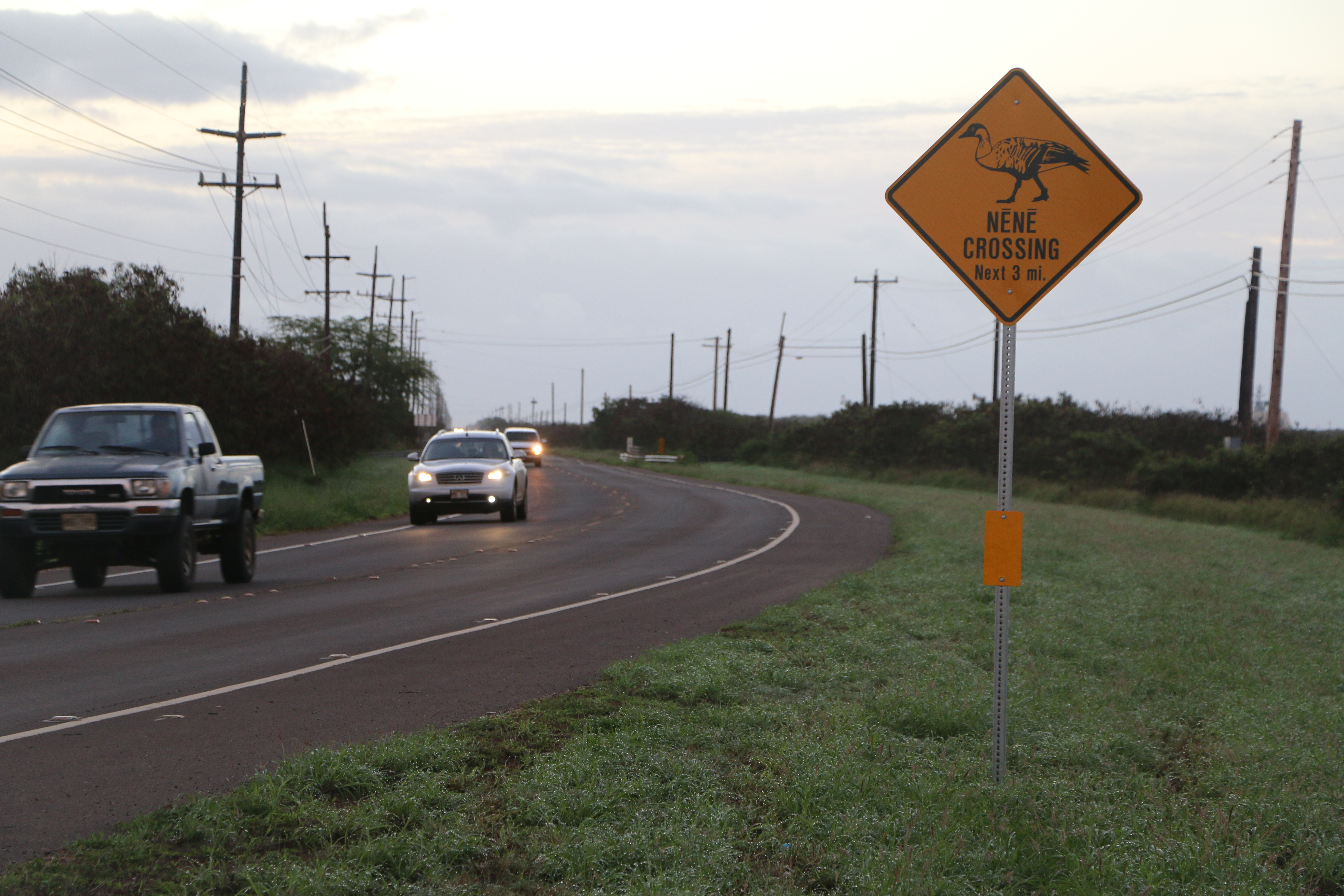Two Nēnē Goslings Killed by Cars on Kaua‘i
Two of three baby nēnē photographed grazing in lush grass alongside the Hanalei River last month were killed by cars as they attempted to cross a highway.
Video shot by DLNR and distributed to media across the state on Dec. 28, 2016, showed a family of nēnē; mother, father and their three goslings resting and eating on the stream’s bank underneath the Hanalei Bridge. The deaths of the two goslings happened last week.
Jean Olbert, a biologist with the DLNR Division of Forestry and Wildlife, specializes in protection of nēnē on Kaua‘i. She said, “Many of these deaths are preventable if drivers would simply heed warning signs, slow down, and exercise caution in areas where nēnē families commonly breed, nest, and raise their young.”
Olbert and other state biologists continue to look for novel ways to get the word out about nēnē road strikes. Our first goal is to increase awareness to visitors on the island who may be less familiar with the native wildlife.
Road strikes happen on other islands, but have been particularly bad on Kaua‘i recently with eleven birds struck and killed by vehicles since last December. More than 50 birds have been killed in this manner in the past two years. On Kaua‘i, the worst locations for nēnē deaths are around the Hanalei Bridge, on Kilauea Road near the Kilauea Point National Wildlife Refuge, and on the west side of the island.
The greatest number of road deaths occur between December and April during the peak breeding and molting season. During this time both adults and goslings can’t fly and especially vulnerable to passing cars and trucks.
Nēnē like to forage for food along highway edges and ditches that are regularly mowed. Runoff from paved surfaces helps grow especially desirable grass in these areas. DLNR is opening discussions with the Dept. of Transportation and Kaua‘i County to explore reducing and/or changing roadside vegetation that isn’t as attractive to nēnē.
Olbert said most birds are killed on roads in the early morning and evening hours. “There’s a nēnē crossing warning sign within 25 feet of where video and photographs of the family were taken. We really implore all drivers on Kaua‘i to watch for the signs, the nēnē, and drive safely.”

Image montage – Maui Now. Photo credits: Department of Land and Natural Resources, Division of Forestry and Wildlife.

Nēnē crossing on Kauaʻi, PC: Department of Land and Natural Resources, Division of Forestry and Wildlife.

Nēnē crossing on Kauaʻi, PC: Department of Land and Natural Resources, Division of Forestry and Wildlife.

Nēnē crossing on Kauaʻi, PC: Department of Land and Natural Resources, Division of Forestry and Wildlife.

Nēnē crossing on Kauaʻi, PC: Department of Land and Natural Resources, Division of Forestry and Wildlife.

Nēnē crossing on Kauaʻi, PC: Department of Land and Natural Resources, Division of Forestry and Wildlife.











